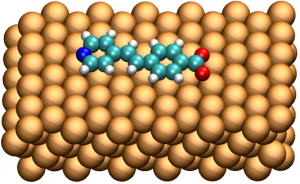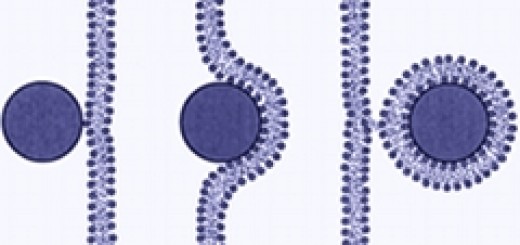DFT analysis of combined 3D NC-AFM and STM imaging of the Cu(100)-O oxide surface
 Wednesday, 21th March 2012. 12:00-13:00
Wednesday, 21th March 2012. 12:00-13:00
Milica Todorović
Departamento de Física Teórica de la Materia Condensada, UAM
ABSTRACT:
Investigation of novel catalytically active surfaces requires a comprehensive experimental method for the identification and rapid characterization of prospective catalytically active sites. In a bid towards functional imaging, three-dimensional atomic force microscopy (3D-AFM) in non-contact mode [1] has been combined with scanning tunnelling microscopy (STM) to study the oxygen-terminated copper (100) surface. Complex 3D data sets, obtained by simultaneously recording the tunnelling current and the AFM frequency shift, allow for site-specific quantification of forces and tunneling currents. The wealth of information obtained is remarkable, but the interpretation of the wide range of contrast modes requires a thorough characterisation of the sources of contrast in AFM and STM imaging.
We combined DFT total-energy calculations with Non-Equilibrium Green’s Function (NEGF) methods for electronic transport to determine the tip-surface interaction and tunnelling current [2, 3, 4] for a large set of tip models in order to clarify the different contrast modes obtained in the experiments. We studied the features of a stable Cu(100)(2√2x√2)R45deg-O surface reconstruction and identified prospective reaction sites, before introducing model AFM tips to conduct a series of tip approach simulations. The effect of tip changes on imaging modes was explored by considering tips of different reactivity. Our simulations, in comparison with AFM experimental images, identified a contaminated tip with a Cu-terminated experimental configuration. Charge density and current calculations further helped us investigate the STM imaging modes for tips of different reactivity. Through this work, were able to explain a large variety of experimental STM contrasts obtained. Lastly, simulations of different surface defect models enabled us to understand detailed STM image features and led us to consider the mechanisms of domain formation on the Cu(100)-O surface.
[1] B. J. Albers et al., Nature Nanotech. 4, 307 (2009)
[2] Y. Sugimoto et al., Nature 446, 64 (2007)
[3] P. Jelinek et al, Phys. Rev. Lett. 101, 176101 (2008)
[4] J. M. Blanco, F. Flores and R. Pérez, Prog. Surf. Sci. 81, 403 (2006)


















